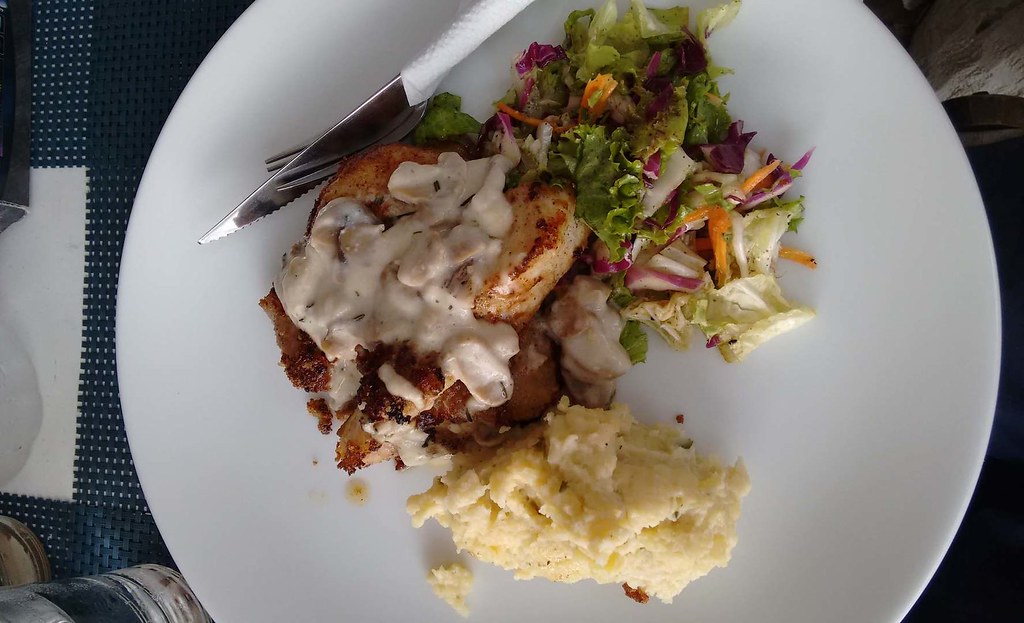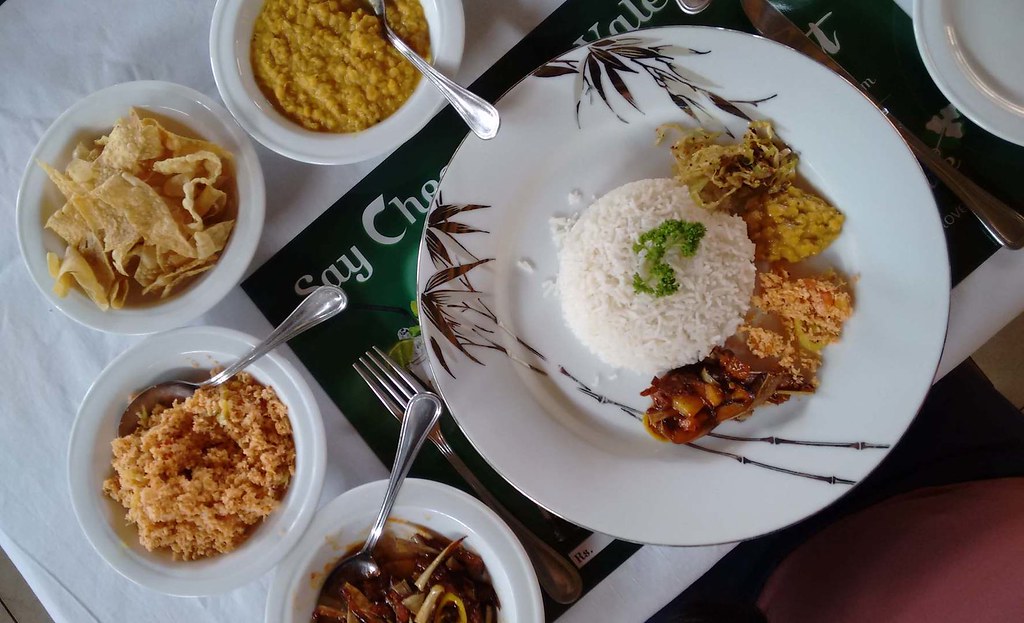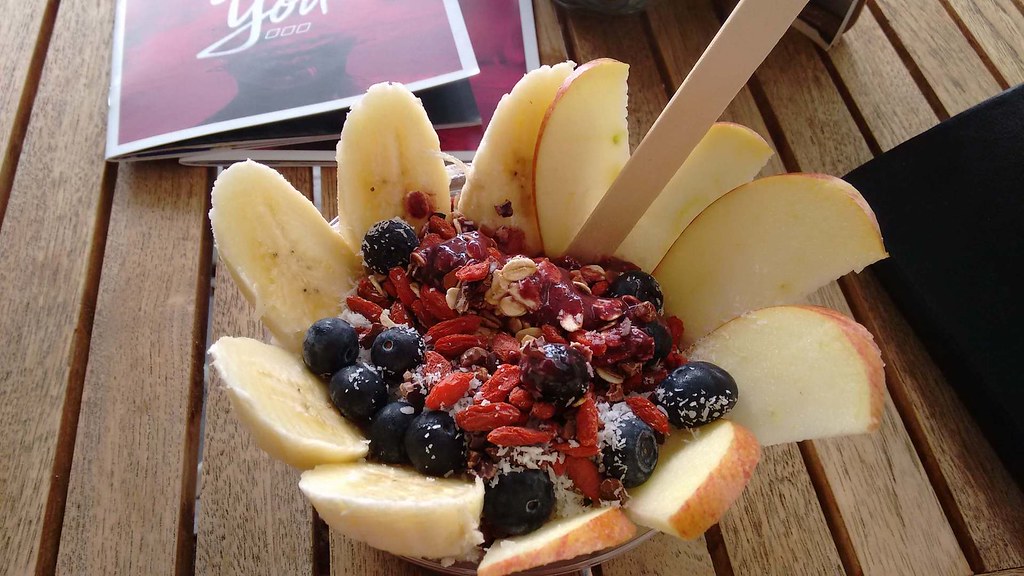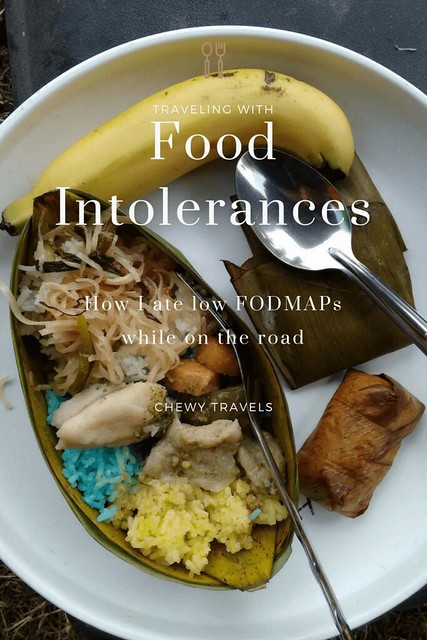I’m bringing peanut butter next time. How I ate low FODMAPs on the road!
Eating while on the road can be tricky if you want to try to eat healthily. It might be even harder to stick to some dietary restrictions. I started low FODMAPs in early 2016, and it has helped me with anxiety, bloating, and other related health problems. I knew that traveling while avoiding certain foods would be difficult, but I had a general plan going into it.
My gut issues started in 2012, after have a few incidents where I needed to take antibiotics (one of which may have been Lyme disease). I didn’t really understand what was happening to my body, or what the other symptoms were such as fatigue and brain fog. Eventually, I stumbled upon the nutritional research on FODMAPs.

About my tummy troubles
Although nowadays I’ll occasionally post a photo of me on Instagram, sometimes maybe even a photo of me in a bikini, a few years ago I was super self conscious about my stomach and my bloating issues. I also didn’t want to talk about it. I felt too embarrassed, and I still couldn’t explain it so I didn’t know what to say.
There were some days where by the end I felt and looked like I was several months pregnant. There were days when I didn’t want to go outside because I felt like my stomach sticking out was too awful looking. I even skipped out on team practices sometimes because I didn’t feel confident or was too lethargic to do physical activities.
Even now, when I’m looking and feeling the best I have in years, a stressful moment or peep of anxiety could throw me backwards and I’ll have a bloated day (or few days). I’m happy with my situation now, though, which took a long time to finally accept so that I could do something about it. Knowing what causes the worst of my symptoms is a huge relief, and keeping to a plan doesn’t take as much effort as it once did.

If my tummy is happy, I’m happy.
About FODMAPs
What I found was a lot of tummy diet books that are out there now are based on low FODMAP diets. This is great because it is supported by science (at least to some extent, even if we don’t fully understand the mechanisms). If you are experiencing chronic bloating and gas, it is worth a try! Read up on it a little and see if it could be helpful for you.
FODMAP is an acronym created by nutrition researchers to represent certain compounds naturally found in foods. They are short chain carbohydrates and sugar alcohols. It stands for:
Fermentable
Oligosaccharides
Disaccharides
Monosaccharides
And
Polyols
The leading researchers are based at Monash University in Australia. For more info, check out this site or watch this video or this longer one of a lecture. Some studies suggest that following a low FODMAP diet can help with the symptoms of irritable bowel syndrome.
Traveling while low FODMAPping
To be clear, I didn’t eat completely low FODMAPs while traveling, but I did avoid my major triggers which are wheat, onion, and garlic. Most of what I eat is vegetarian, though I’ll sometimes have seafood and the very occasional chicken or pork. I also tried to limit alcohol and caffeine.
If you know what specific groups within FODMAPs are your biggest triggers, make those your main priority and cut your losses with the others during your travels. If you can remember what vegetables generally should be avoided, you can try to avoid them (such as broccoli and cauliflower for me). But your main priorities are your major triggers. For me, those were onion, garlic, and wheat in that order. Lesser priorities for me were lactose and fructose.
This works best if you have been doing a low FODMAP diet for at least a month or a few months before you travel. It takes time to get used to making new choices, and facing the decision to stick to your plan. When you are traveling, your willpower will be even lower so if you have trouble keeping to a plan while at home it will be even harder on the road. Make it easier on yourself by training yourself to know what you can and can’t eat, and let your body get used to it so it doesn’t crave things. Your brain will still crave things long after your body stops missing it, so that is why an extra month or two would be helpful.
My main strategies for food
1. Buying groceries for snacking and eating in
Whenever I could, I would hit up a grocery store as soon as I arrived in a new place. There you can see everything that is in something on the food labels. Even in Asia, many products will have English labeling. Then there are fresh produce and dried goods that you can’t go wrong with like fruits and nuts. Many specialty items I was able to find in the supermarkets, especially in places like Australia, Singapore, and Bangkok. Overall, I had several things I was specifically looking for in the markets, and also when I ate out.
These included:
- Almonds and other nuts
- Fruit
- Corn or rice cakes
- Hard cheeses (not too often)
- Canned tuna (mostly when I was in Australia)
- Quinoa and rice
2. Eating out
When eating out, I mainly ate vegetarian. Meat and seafood are often seasoned with herbs and spices that include dried or powdered garlic or onion. Stir fried veggies are easily adapted. Plain rice is a staple sidekick to any meal. Potatoes are ok, but I tried not to get fries too often. Salads are usually safe, although you’ll have to check that the dressing doesn’t have garlic or onion in it. (If you aren’t super sensitive to garlic, the amount that goes into dressing may be ok for you. I did have some on occasion.) I tried to limit how often I ate fried foods, but in some places it was harder to avoid. I didn’t eat too much beans or broccoli/cauliflower because those will give me bloating and gas if I have more than a few mouthfuls.
My favorite go to meals were:
- Salad (ask about the dressing, and ask for no onion)
- Stir fried veggies and rice or rice noodles
- Grilled fish
- Sushi
Location dependent strategies
On this specific trip, I knew that certain places would be easy and some would be very difficult. In certain countries, anyone with any food issues will have it easier than in others, such as the UK and Australia. In Asia, it can be easy to avoid wheat (though there may be gluten or cross contamination), but it will be harder to avoid garlic and onion.
Australia is super easy. You can get a gluten free option in most restaurants, and often more than one. Most are willing to adjust an order for your specific needs. English is not an issue so you can explain your situation, but they seem to be familiar with making adjustments to orders for dietary restrictions.
Asia is another story. You will have to eat more rice in Asia. You can get corn and corn based things in some countries that have more foreigners living there. Potatoes are around, but not super common. If you can make or buy your own food, that is the best, but eating out is usually so cheap in Asia. It isn’t usually very feasible to cook especially if you are moving around every few days.
Singapore was relatively easy. English is not an issue here either, but whether they execute on what you request may not be as up to par as what I experienced in Australia. I did have one incident where I asked for no garlic and onion and the dish came with garlic (even after specifically asking for none when ordering). But it was usually ok. I could cook wherever I stayed (with friends or in Airbnb), and eating out wasn’t usually a huge problem. The go-to was plain rice with cooked veggies (check for garlic and onion though!). Some Indian and Chinese food stalls will be completely garlic and onion free. Be sure to ask!
When traveling in Sri Lanka, there were some things that were easy and some were harder. If you are getting pre-made food such as side dishes that accompany a curry, those can’t be adjusted for dietary restrictions. But if you order a curry, the main curry you order is usually made fresh and can be done without specific ingredients if you ask (and if they understand). To ask for no garlic or onion in Sinhalese, you can say “Lunu epa, Sudu Lulu epa” (according to my Sri Lankan friend).
My friend’s mother outdid herself by accommodating my needs when I stayed at their home, and I did get this entire fantastic meal made for me at a restaurant in Negombo:

Veggie meal in Negombo! Sans garlic and onion!
A really good breakfast or anytime meal was egg hoppers. They are rice flour based pancakes with eggs in the middle. You can also get them plain and put butter and jam on them. Another thing I loved having was curd in Ella, Sri Lanka.
When traveling in Cambodia, many people will speak English although you may have to take your time explaining what your request is. I spent most of my meals in more Western places because by this point I was tired of fried foods that I couldn’t be sure what the ingredients were. The only place where I had Cambodian food that was delicious was at Chamkar in Siem Reap!!
Lessons I learned
1. For one, I will bring peanut butter with me next time. I did find some that was ok in Australia, but I don’t think anything is as good as a nice jar of peanut butter from the States. You will find Skippy and Jiff in the supermarkets in some countries such as Singapore and Thailand. I’ve gotten used to eating peanut butter that is more natural though, so I didn’t buy good ol’ (overpriced) Skippy while I was traveling. (We are a Skippy family. Where are all the Jiff families?)
2. Always check with the wait staff about something while you are ordering. If something arrives (and this happened to me) and you can’t eat it, it isn’t their fault and you’ll still have to pay for the food. If you asked for specific changes to the dish and it comes out wrong, that is the fault of the server or cook and you can ask them to redo the order.
3. That said, don’t be afraid to talk to them when your order comes out wrong. Most people will be quite gracious and try to fix the situation if they understand what has happened. Don’t think of it as being confrontational. This has to do with your health, and if they understood your request and were not able to make it the way you asked then they should have refused to take your order from the start (which has also happened to me).
Tips and more resources for food intolerances
If you have a gluten intolerance or you have Celiac’s disease, here are some helpful resources:
Gluten-free guide by Jodi Ettenberg at Legal Nomads
If you are lactose intolerant, buy some lactase enzymes to bring with you in case you would like to have the odd ice cream or cheesy meal. Pop one before you start having dairy and you are good to go! More tips on this here.
Further resources:
Allergic Living’s section on travel
Medical advice for traveling with food allergies
5 tips for traveling with food allergies
5 reasons to travel even with food allergies
Eating with dietary restrictions in Thailand

OK, so I had some hipster meals. Like this açaí bowl in Brisbane, Australia
Worth the effort
I’ve just started reading Gut by Giulia Enders, and I am more and more convinced that it is worth the effort to stick to your plan when traveling. It is easy to say f* it all, I’m just going to eat whatever I want. It might be easier to eat the food you were served, rather than confront the server about an error. But the short and long term effects will eventually hit you, and if you will be traveling for a long time you will regret it.
Are you trying to stay on a low FODMAP diet? Although it isn’t meant to be a long term strategy, I think avoiding the major triggers long term is a good way to let your gut heal. If you have any questions, put them in the comments below!
Do you have special food requirements? Have you tried traveling while sticking to them?
Pin this for later!

